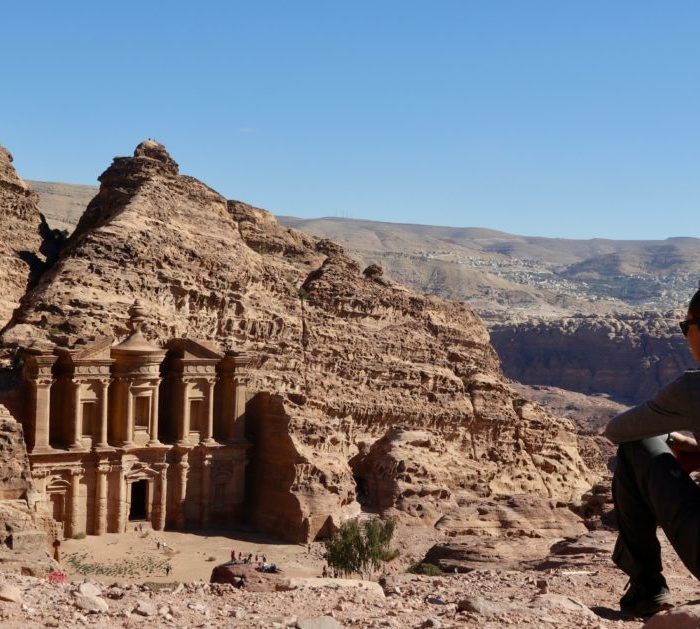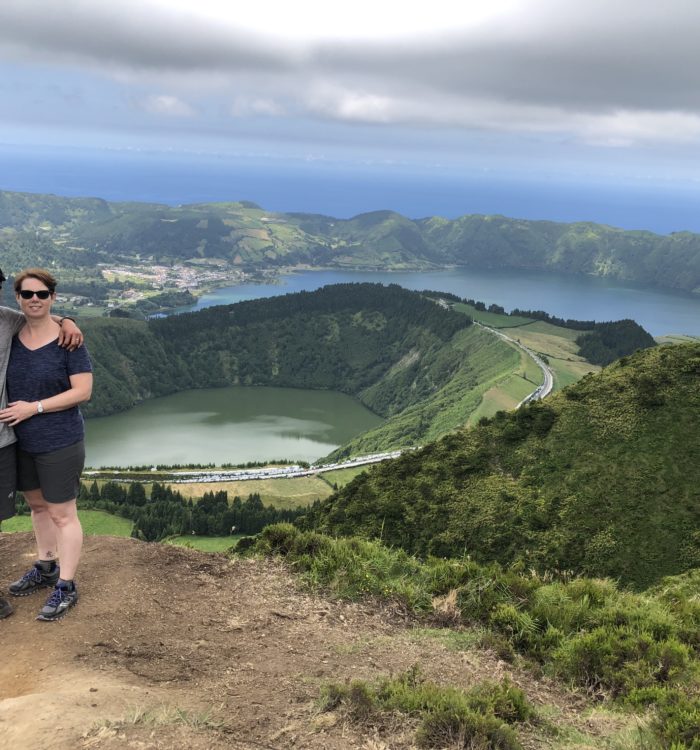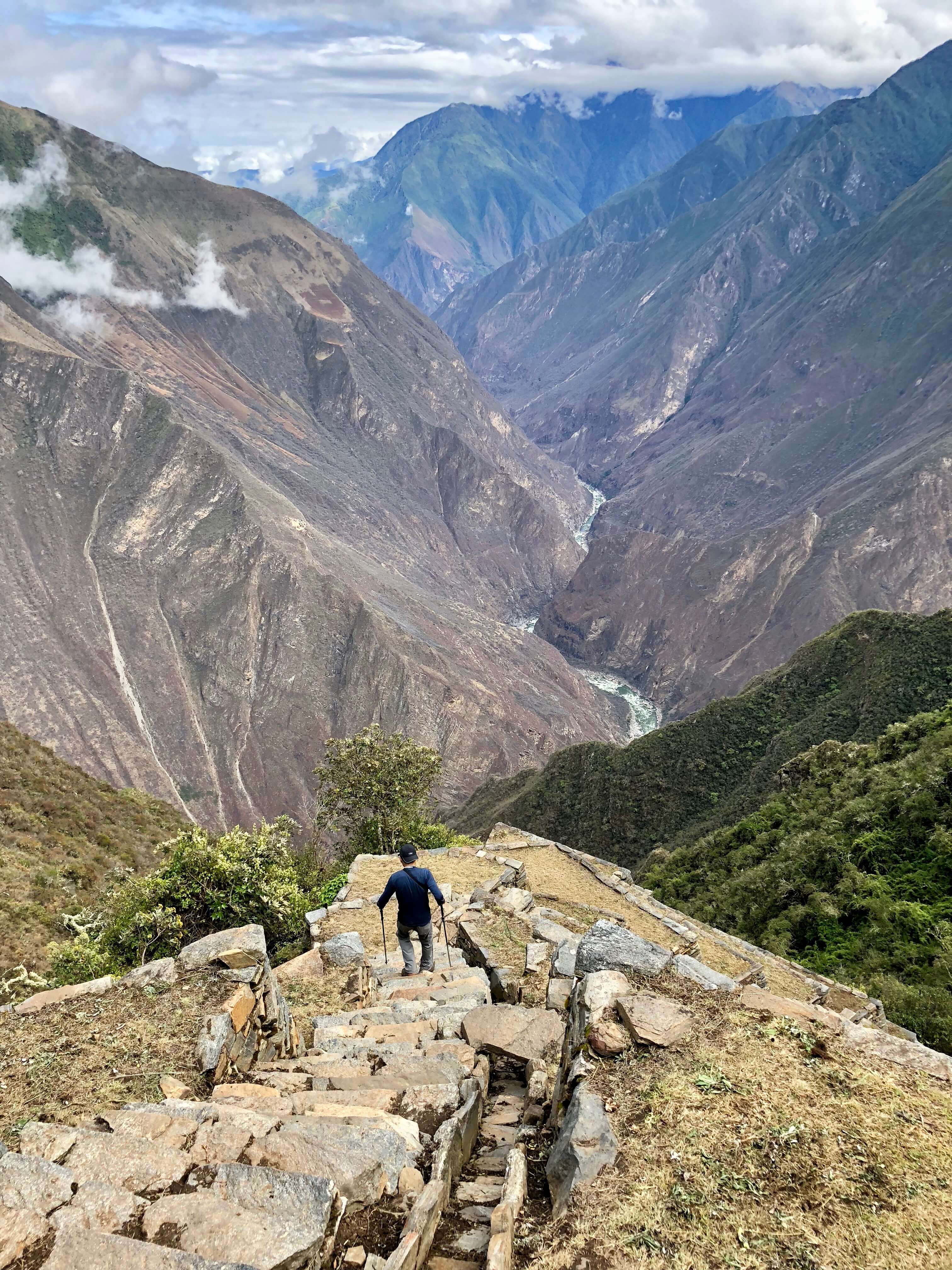Phnom Penh, Cambodia – Dec 12-15, 2009
First impressions of Phnom Penh aren’t great. We arrive at night, our hotel pick up isn’t there, the tuk tuk drivers swarm us like piranhas, putrid smelling garbage and litter dominate the streets like no other Asian city we’ve seen, and one of the hardest things to deal with appears—child beggars and street vendors. Wayne also hadn’t told me Cambodia has the highest HIV rates in Asia, and the street scene can be particularly edgy.
But with no expectations, and me out of gas and already scraping rock bottom with travel fatigue, hidden gems appear. The people. They are warm, courteous and humble. After weeks of never feeling we were on solid ground dealing with some of the locals in Vietnam, our warning light suddenly shuts itself off.
Wayne blends in like a chameleon. In China he was mistaken for a local, often with mixed blessings. In Vietnam he was taken to be my guide. So he learned numbers, and how to say, ‘how much’ and ‘too expensive’, so he could get away with decent prices–sometimes. Even here in Cambodia where most locals are darker skinned, he has been mistaken as a local. It seems everybody wants to claim Wayne as their own. One foreigner even thought he was a vendor. With his few phrases of Khmer, he pulls of decent prices, though this isn’t the land of the eternal hustle like Vietnam. Wayne offers me a, ‘Get out of jail free’ card in the form of an early return. My aunt Vee is dying, I know it’s ripping my mom apart and I feel I should be there. But I suspect both mom and Vee would want me to continue, being great adventurers themselves. So we soldier on.
We hire a tuk tuk (100cc motorbike hauling 2 wheeled passenger carriage) driver named Tom, who is so humble and laid back we think it’s a language and cultural barrier at first. But his English is solid. He doesn’t push money, merely tells us to pay him afterwards what we think a day of his services is worth. This is a green light so we wind up hiring him for two days. During this time we get to know him. A high school grad with lost aspirations to be a doctor, he has to content himself hustling fares. A great day is $15. A very decent year might be $2000. He drops $750 a year on school fees for his girls Petra and Sopheary, ages 9 and 12.
Cambodia is a place with unfathomable human contrasts, and irony. We visit Tuol Sleng Museum, a former high school, and one of detention and torture chambers of the Khmer Rouge during their genocidal reign of terror–1975-1978. At the ticket booth, advertisements flogging an Indian restaurant greet us. This in a place where 100 people were brutally killed daily.
Group shackles:
Rules of the Tuol Sleng Prison (translated)
We move onto the primitive torture and interrogation rooms, and scan the grisly photo displays of the many victims.
Little songbirds playfully fly in and out of the former cells, in sharp contrast to the sobering legacy of the building.
A sharply divergent experience to this is the Royal Palace which still houses the King, a largely ceremonial position. Here we learn how venerated the cobra is as a protector, how layered roofs are designed to replicate the scales of cobras and their tails pointing to the sky.
We follow this with a trip to one of the killing fields, Choeung Ek. One of the most popular of destinations for tourists, it’s set in a quiet, lush rural landscape of farms and green hues. A nearby school with the most innocent of sounds, children singing shadows, in fact adds a thick measure of sombreness to our movements.
An enormous stupa with 17 levels of clothing, skulls and bones greets all visitors. Despite the macabreness of piles of skulls, it is a tasteful and moving homage to the 20,000 souls who were, or are still buried in mass graves here.
A peaceful walk through the grounds takes us to these empty pits. Along the way we pass the tree used to crush the heads of baby skulls, the mass grave of scores of headless bodies, and the ‘Magic Tree’ used to hang speakers playing propaganda slogans so loud as to drown out the cries and moans of those dying. Almost everybody was killed by hand with simple farming tools, bamboo canes, knives….this wasn’t the sophisticated, systemic killing machine of the Nazi, in fact I think this is even more grisly and it became friends killing friends, neighbour on neighbours, comrades on comrades.
Phnom Penh is a dump, no doubt about it. But it offers respite in the form of decent, decent food as we tend to frequent restaurants that have taken in and trained street kids in the hospitality trade. These almost always cater to expats and tourist, but the food is great. And the people are either unfailing polite and courteous, or have a lost, aimless look, especially the children. Malnutrition, perhaps? Again, the contrasts and irony of Cambodia (so far).
We end three memorable days giving an English lesson to Tom’s girls in their two-room concrete abode on the edge of town. The girls are adorable, and though they have some English vocabulary, they couldn’t conjugate a verb any better than we could in Khmer. It was refreshing meeting decent people without a hustle up their sleeve.
Favourite meal:
Homemade yogurt with homemade granola with fresh mango and papaya at the Garden Centre Cafe. A close second was the fried noodle salad with tofu and sweet potato spring rolls at Romdeng.
Cambodia By the Numbers:



